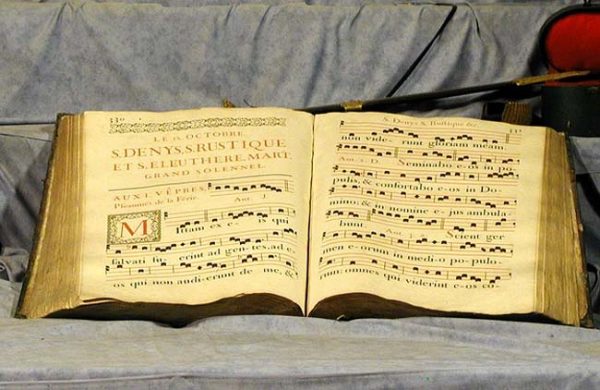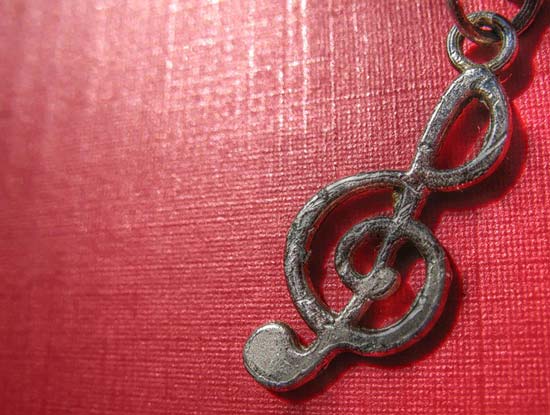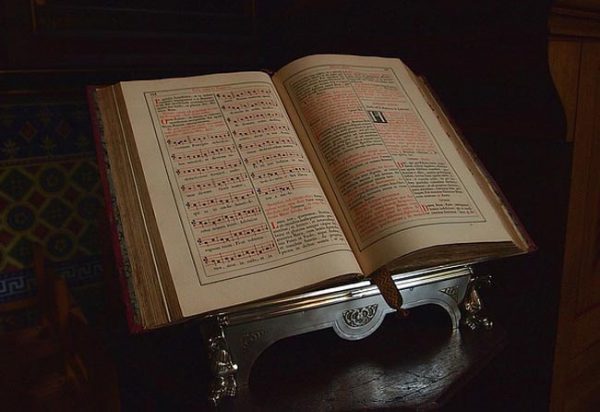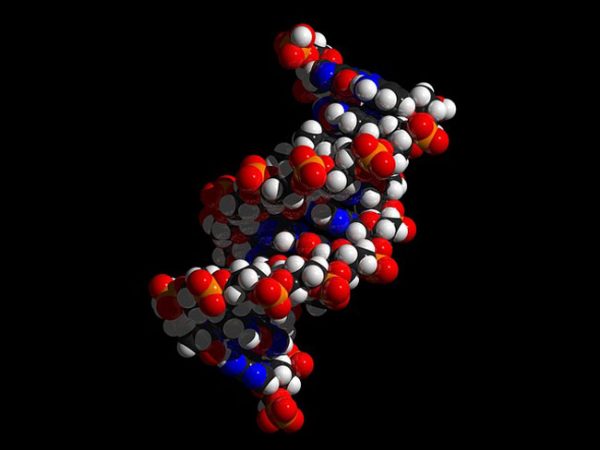The Solfeggio frequencies make up a 6-tone music scale, which was first used in religious music of the 10th century.
Music tuned to the frequency of this scale is known to have healing properties and promote better wellbeing.
Evidence of these frequencies existed as far back as early Biblical times.
ABOUT SOLFEGGIO FREQENCIES
The Solfeggio frequencies are most commonly associated with the Gregorian Chants.
The chants are a form of monophonic song of the Roman Catholic faith, dating back to the 9th and 10th centuries.
The original 6 Solfeggio frequencies and their said benefits are as follows:
396 Hz – Associated with Liberating Guilt and Fear
417 Hz – Associated with Undoing Situations and Facilitating Change
528 Hz – Associated with Transformation and Miracles (DNA Repair)
639 Hz – Associated with Connecting/Relationships
741 Hz – Associated with Expression/Solutions
852 Hz – Associated with Returning to Spiritual Order
* Hz = hertz.
CLICK ON ABOVE GRAPHIC FOR MORE INFORMATION
WHERE DO THE SOLFEGGIO FREQUENCIES COME FROM?
Based on the research of musicologist Professor Willi Appel, it’s likely the scale was first introduced by Guido d’Arezzo, a Benedictine monk. Monks of this order of the Catholic Church followed the Rule of Saint Benedict.
The earliest example of the scale was his musical rendition of the Hymn to St. John the Baptist or Ut queant laxis, based on an 8th century poem attributed to another monk named Paulus Diaconus.
Here’s the first stanza of the poem:
Ut queant laxis
Resonare fibris
Mira gestorum
Famuli tuorum
Solve polluti
labii reatum
Sancte Johannes.
Notice the first syllable of the beginning lines. Ut-Re-Mi-Fa-Sol-La.
This might sound familiar, since it’s the basis for the Do-Re-Mi-Fa-So-La-Ti scale used by vocalists today. This adds another note to the original six-tone Solfege.
THE MEANING BEHIND THE SOLFEGGIO FREQUENCIES
So, what makes this scale so significant that it’s still being talked about and used hundreds of years later?
There’s the musical, historical, and religious importance mentioned above. But these frequencies are also said to have healing attributes.
396 Hz: the first is thought to help liberate us from feelings of guilt and fear, which is arguably one of the biggest obstacles we face in life.
417 Hz: the second helps with the undoing of situations and facilitating change in our lives. It is said to alleviate the conscious and subconscious mind from traumatic past experiences.
528 Hz: the third is perhaps the most famous of the frequencies, because of its reputation for creating profound transformation and miracles. It has even been linked to the repair of human DNA, the most basic building blocks of our bodies and minds.
639 Hz: the fourth is said to improve our connection and relationships with the people around us. This includes healing strained relationships and creating new ones.
741 Hz: the fifth is connected to expression and solutions, helping us open up and share our gifts with the world more fully.
852 Hz: the sixth and final of the original notes, returns us to spiritual order, improving our access to the spiritual or sublime.
CLICK ON ABOVE GRAPHIC FOR MORE INFORMATION
SOLFEGGIO MUSIC & ITS ABILITY TO HEAL
When first introduced to the Solfeggio frequencies and their purported benefits, it’s easy to be skeptical or even outright dismissive. However, humans have long believed in the healing properties of music, and in the modern day these have been proven through scientific research – particularly that led by Harvard.
Since ancient times, music has been recognized for its therapeutic value. Greek physicians used flutes, lyres, and zitters to heal their patients. They used vibration to aid in digestion, treat mental disturbance, and induce sleep.
Aristotle (323–373 BCE), in his famous book De Anima, wrote that flute music could arouse strong emotions and purify the soul. Ancient Egyptians describe musical incantations for healing the sick.
Music is a part of the cycle of natural life. Music is based on rhythm and harmony and human life is based on rhythm. Day and night, seasonal changes, and all physiological and biological functions are rhythmic.
We inhale and exhale, our hearts beat in systole (contraction) and diastole (expansion or relaxation.)
Sleeping, eating, menstrual cycles, walking, talking, and other, if not all, functions of life are rhythmic.
MODERN MUSIC HEALING
In the modern day, science has been able to back up exactly what our ancestors described.
For instance, one study concluded that music can reduce anxiety while increasing self-esteem and interpersonal skills.
This is akin to liberating guilt and fear with the frequency 396 Hz, undoing situations and traumatic experiences with 417 Hz, and improving our relationships or ability to express ourselves with 639 and 741 Hz.
Another study found that music had a positive affect on the autonomic nervous system and endocrine system, reducing stress in the process.
This means music isn’t just soothing because it sounds good, but because of actual physiological and hormonal effects it is having on the body.
Sound is powerful and has always influenced healing. Consider ultrasound, a medical test that uses high-frequency sound waves to capture live images from the inside of your body, discovered in the 1930s.
In the 1940s, a French doctor named Alfred Tomatis developed hearing and listening therapies known as the Tomatis method, or Audio-Psycho-Phonology (APP). He used music to cure hearing loss and successfully employed it in treating autism and learning disabilities.
Is it a coincidence that Dr. Tomatis used recordings of Gregorian chants, one of the original sources of the Solfeggio scale.
CLICK ON ABOVE GRAPHIC FOR MORE INFORMATION
WHY THE SOLFEGGIO FRQUENCIES WERE FORGOTTEN
Despite being lost for hundreds of years, the Solfeggio frequencies used by these chants would finally be recovered in the 1970s.
Today, as shown by Dr. Horowitz, the 528 Hz frequency, which is the third note in the original Solfeggio, is used to repair DNA.
This would explain why the Latin word for miracle is “mira gestorum”? Remember that 528 Hz is Mi on the original scale.
Introduction of the 12-Tone Scale
Some time near the end of the 16th century, the “Twelve-Tone Equal Temperament” was created in Renaissance Italy and rapidly gained in popularity.
As such, the “Just Intonation” method of tuning, which used the six-tone Solfeggio, was gradually replaced.
Many, like David B. Doty, consider this 12-tone scale to be too rigid and confining.
In his book The Just Intonation Primer, he describes the ancient 6-tone scale as having a certain clarity and smoothness that today’s music, which uses the 12-tone scale, lacks.
This is perhaps the reason why masters of Just Intonation, like Beethoven, are still praised to this day?
SOLFEGGIO – LOST IN HISTORY
There’s also the possibility that the scale was to some extent “lost”, which wouldn’t be surprising given the time period they were developed: Guido d’Arezzo’s lifetime fell right in the middle of Western Europe’s Middle Ages.
His death also came during a period of great contention between the Western Christian Church, which we know today as the Roman Catholic Church, and the Eastern Church, which we in the West now call the Eastern Orthodox Church.
This led to the Great Schism of 1054, a separation that still exists to this day (8).
So, while the Eastern Church and the Eastern Roman – or Byzantine – Empire was very active in preserving Western artifacts during the Middle Ages, they would’ve had very little reason to preserve a music scale created by the Western Church, especially since the Eastern Church had their own scale at the time, one with 8-tones called the Oktoechos.
In short, it’s not impossible that the Solfeggio was actually lost in history, like so many other documents of the time.
In fact, the historical records place the introduction and rise of the twelve-tone scale in the century just preceding what most historians consider the “end” of the Middle Ages.
CLICK ON ABOVE GRAPHIC FOR MORE INFORMATION
174 Hz Audio Promotional Examples
285 Hz Audio Promotional Examples
396 Hz Audio Promotional Examples
417 Hz Audio Promotional Examples
432 Hz Audio Promotional Examples
528 Hz Audio Promotional Examples
639 Hz Audio Promotional Examples
741 Hz Audio Promotional Examples
852 Hz Audio Promotional Examples
963 Hz Audio Promotional Examples
About 432 Hz Music: Theory, Science & Benefits
528 Hz: History, Research, Benefits
CLICK ON ABOVE GRAPHIC FOR MORE INFORMATION
Want to learn more about The Human Psyche – Mind Or Soul – Center Of Emotions – then just click to find out.
Payseur Family History
Fritz Springmeier – Bloodlines of Illuminati
The Rothschild Dynasty
The Disney Story
The above four links open a new tab in Louis Payseur’s site.
Well-Being & CBD Oil – Curated Presentation
Shopping & Clothing – Curated Presentation
Accessories – Curated Presentation




















